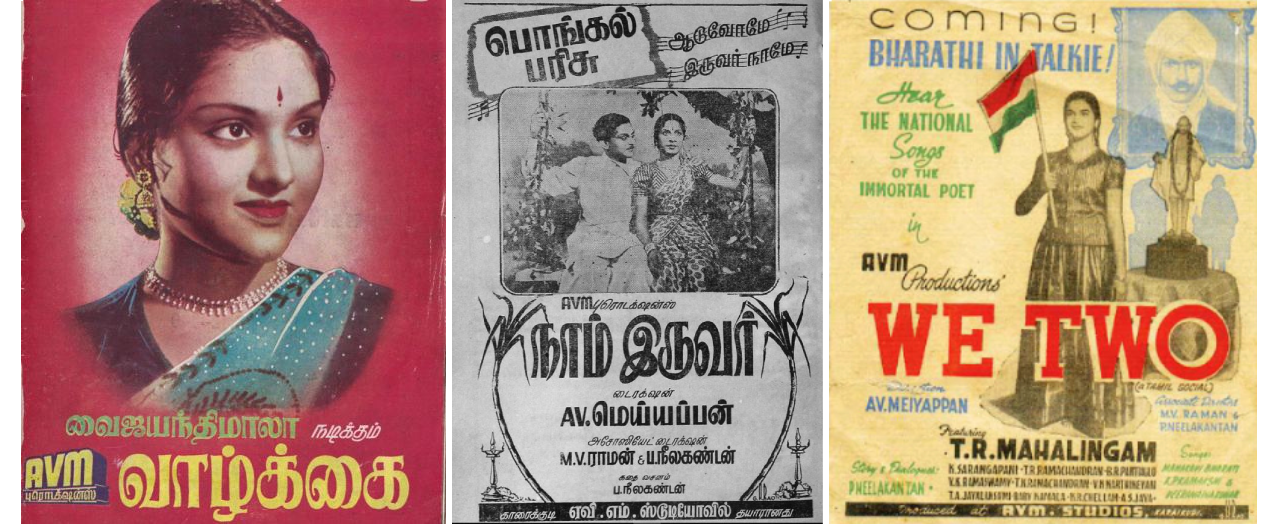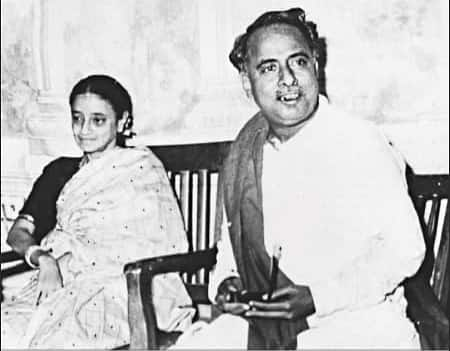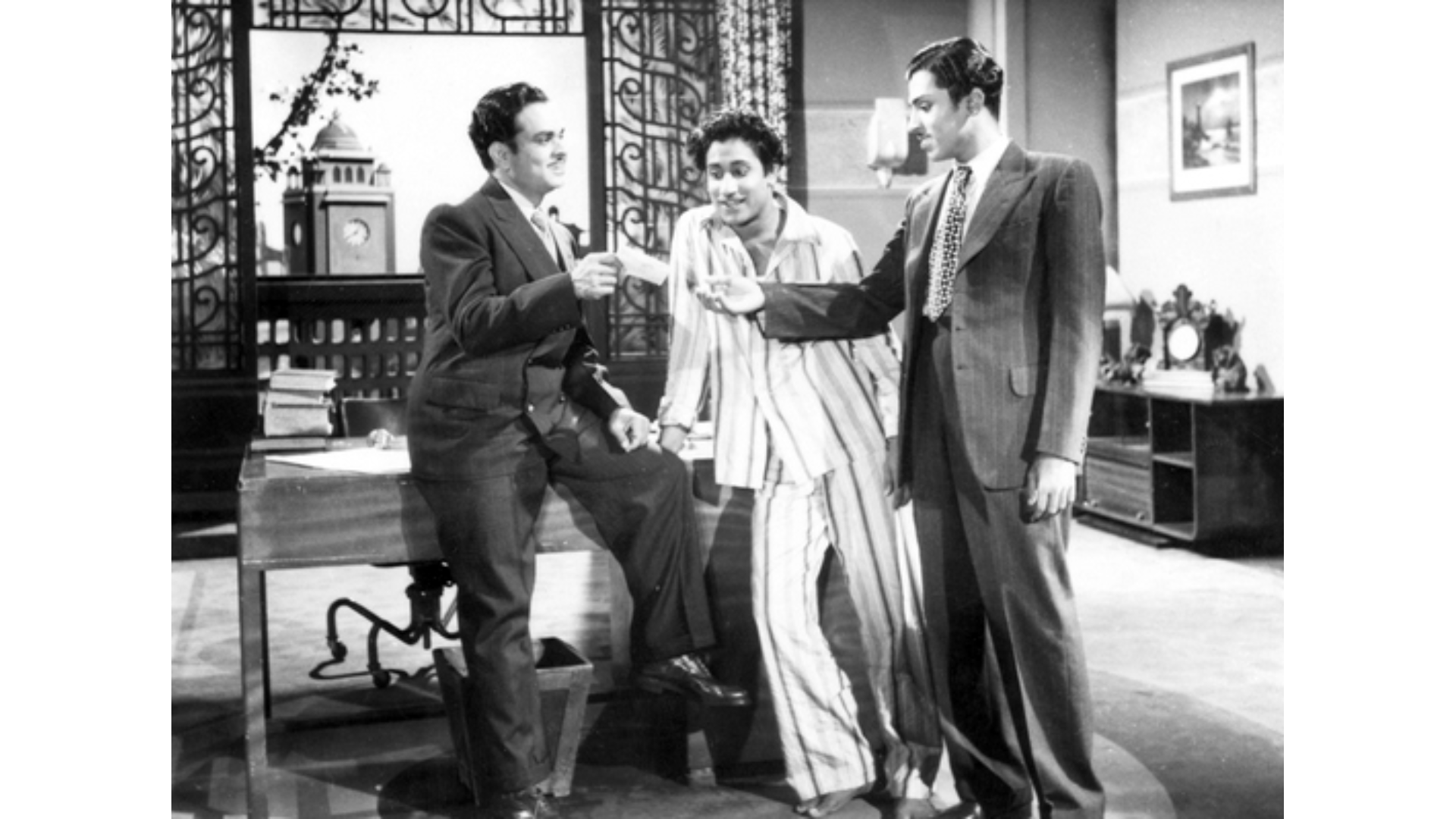



The earliest childhood memory I have of experiencing an Independence Day at home was that of watching a few black and white film songs. For example, Kumari Kamala dancing to "Mahaan Gandhi Mahaan" from AV Meyyappa Chettiyar’s 'Naam Iruvar' on Doordarshan. Growing up, I was also given the trivia that a couple of songs were added to this film after India’s Independence, as it was released six months prior to August 15, 1947.
The songs in this film were by Subramanya Bharathi and one of the songs echoed India getting her freedom (at midnight) albeit, written ahead of the appointed hour. "Aaduvome Pallupaaduvome Aanandha Sudhandhiram Adaindhuvittomendru" (Let’s dance and sing - for we have attained our joyous freedom) was written with foresight by the great poet and for several years this song was played in flag hoisting functions across schools in Tamil Nadu. Such was the power of cinema as a mass medium that the single most important event in India’s historical fight for freedom had to be passed down generations mostly via celluloid brilliance.
Studios like AVM and Gemini were torchbearers of the Freedom Movement in cinema. AVM’s other productions like 'Vaazhkai' (Life [1949] introduced Vyjayanthimala) and 'Penn' (Girl [1954], starring her and Gemini Ganesan) were also made in Hindi, and these films had more than two songs or scenarios that involved the freedom struggle, even though the core story was some other social drama. Cinema, then was always seen as a platform for propagating relevant information and values apart from serving as a record of events that happened during the times these films were made.
In independent India, cinema boomed into a medium of “creative expression” and has since then become an expanding source of entertainment. With time (and changing regimes) however, there exists this perpetual tryst between filmmakers and the Censor Board where this freedom of expression has seen and still sees, many a contention. Be that as it may, the context of India’s Independence Day does give us enough reason to delve deep into the movies that did find their “voice” in the Dravidian region.
 Movie posters for Vaazhkai and Naam Iruvar (Tamil and English), via Wikimedia Commons
Movie posters for Vaazhkai and Naam Iruvar (Tamil and English), via Wikimedia Commons
Cinema as a platform for ideology
Even though Hindi cinema had its national themes projected in films like ‘Naya Daur’ (1957), it is the cinema of the South, mainly Tamil, that became a voice for a ‘movement’. Cinema in the South has always been a medium where writers and directors could express ideologies – a trend that stands tall in present times as well, if one were to go by the cinema from Kerala and Tamil Nadu as examples. In Tamil, the filmmaking trend of the 1940s moved away from dramas that sounded like people were talking in their sleep (the slow pace and chaste upper class Tamil slang) to enhanced cinematic experiences like we saw in the musical, adventure-epic ‘Chandralekha’ (1948). S.S. Vasan’s first pan-Indian bilingual film (Tamil and Hindi) also had in it a story of the common man becoming king.
 A 1948 ad for Tamil film 'Chandralekha', and actor Ranjan in 'Chandralekha' (Image credit: Gemini Studios via Wikimedia Commons)
A 1948 ad for Tamil film 'Chandralekha', and actor Ranjan in 'Chandralekha' (Image credit: Gemini Studios via Wikimedia Commons)
It was also the dawn of a new era of Dravidian writers (led by Ramasamy Naicker, also known as Periyar) who gained ground in print and some of his protégés became popular on stage as well.
One such writer broke into Tamil cinema and fuelled the Periyarism fire. C.N. Annadurai (who also became Tamil Nadu’s chief minister) had a successful run as a screenwriter as his plays were made into films. For example, 'Velaikkari' (Servant Maid) also had Anna’s tagline "Ondre Kulam, Oruvane Devan" (One community/Caste, One God) that went on to become a popular catchphrase for his political party, the Dravida Munnetra Kazhagam (DMK), later. This phrase was also used as a song that went by the same name, by his protégé MG Ramachandran (MGR) in 'Pallandu Vaazhga' (1975 remake of Shantaram’s 'Do Aankhen Baara Haath') and was a slogan used by him for his party: the AIADMK.
In those days, Kerala saw its cinema as a secondary alternative for ideological propaganda as compared to print in the early 1950s and 1960s, whereas in Tamil Nadu, cinema became the epicenter of pushing the Dravidian propaganda to its maximum limit into people’s psyche.
 Rani and CN Annadurai (Image credit: DMK via Wikimedia Commons)
Rani and CN Annadurai (Image credit: DMK via Wikimedia Commons)
Dravidian era
After Annadurai, the writer who stormed the Tamil silver screen was the late chief minister of Tamil Nadu, Kalaignar M. Karunanidhi. Karunanidhi’s astute command over the language combined with his ability to create powerful, political storylines, made his films shine at the box-office. His writing gave a fillip to both Sivaji Ganesan and MGR and the two icons would mouth his feisty dialogues, which were even published as separate “dialogue books”. The Dravidian ideology saw an upsurge in the mindset of the youth of the state that took to the Periyar philosophy more willingly in this era.
Sivaji Ganesan debuted in AVM’s 'Parasakthi' (1952), a film written by Karunanidhi that had socialist dialogues and called out the existing ills of society in explicit, no-holds barred writing, with dialogues delivered with much gusto by its leading man. MGR, on the other hand, took his messiah image from films like 'Malaikkallan' (1954) that had screenplay by Karunanidhi, where his ‘heroic’ character sang songs like “Yethanai kaalamthaan yemaatruvaar Indha naatile” (How many more years would they [the people in power] cheat us in this country), thus reflecting the plight of people then. Needless to say, Karunanidhi had a hand in creating MGR’s much loved matinee idol image which MGR himself honed to perfection thereafter, when the two of them went their separate ways.
The roles and songs that MGR had in his films were carefully engineered to ensure he could win big in public life. This was a man who literally swung the electoral polls in his favour each time he contested, creating electoral history.
 (left to right) S.V. Sahasranamam, Sivaji Ganesan and S.S. Rajendran in AVM Productions' 'Parasakthi', written by M. Karunanidhi. (Image via Wikimedia Commons)
(left to right) S.V. Sahasranamam, Sivaji Ganesan and S.S. Rajendran in AVM Productions' 'Parasakthi', written by M. Karunanidhi. (Image via Wikimedia Commons)
1970s: Winds of change
Cinema as a propaganda tool worked wonderfully perhaps till the mid-1970s. By then a new wave of filmmakers took over in all the four languages in the South. There was a marked difference in the manner of speaking Tamil since Karunanidhi’s time (colloquial yet profound but not chaste Tamil) and then, every decade saw a much wider scope of inclusivity in terms of ideas which reflected the eras that rolled by.
In the 1980s our stories spoke of a more modern society and music became a stand-alone element (Ilayaraaja had breezed in by 1976). Films that had politics as a central theme became somewhat relegated to the art-house space or found their niche in a socialist narrative. However, Tamil and Telugu cinema didn’t get into “political heroism” that was seen in MGR’s time (N.T. Rama Rao had his own similar run in Telugu akin to MGR but pegged his politics on his image as Lord Rama and Krishna). Filmmakers like K. Balachander brought to light inequality and relationship dramas clothed in romantic narratives (and in the process gave Indian cinema two icons in Kamal Haasan and Rajinikanth) while in Telugu, directors like Bapu and K. Vishwanath discovered new idioms of storytelling for portraying their angst against social evils (Chiranjeevi rose to his fame by acting in most of these films).
Freedom to express is challenged
A jump cut to post-millennial films, and we are aware of how in the last three decades there’s been many a Kamal Haasan film (in 1992 'Devar Magan' faced quite a furor) that has seen a stiff battle for ‘freedom of expression’. Haasan has been one of the key voices and even when faced with huge challenges in releasing big budget films like 'Hey Ram' (2000) and 'Vishwaroopam' (2013), he didn’t take the easy way out. “Give me the same freedom that Barathiyar had”, he said in an earlier interview about his strenuous fight with those in power during the release of 'Hey Ram’.
It must be noted that he won his case against the State of Tamil Nadu in 2013 (the Jayalalitha regime) and didn’t hesitate to call out those who curbed his freedom.
Another filmmaker from the South who’s always been under the censor’s spotlight is Mani Ratnam, whose 'Roja', 'Dil Se' and 'Kannathil Muthamittaal' form an anti-terrorism trilogy. He also came under severe pressure - his house was bombed for his 'Bombay'.
In later years, Hindi cinema saw the rise of alternative filmmakers who have all had a role in converting art-house cinema to mainstream - like Sriram Raghavan, Anurag Kashyap, Vishal Baradwaj, Hansal Mehra, Sudhir Mishra, etc., who make films that stay true to their content and who, like a plethora of their counterpart filmmakers (Bala, Ameer, Vetrimaran, Pa Ranjit and MariSelvaraj in Tamil), don’t buckle under pressure and hold on to their right to make the cinema they see fit.
Expanding the idea of freedom
A few days ago, at the audio launch of Pa Ranjith’s 'Thangalaan', the heroine of the film Parvathy spoke thus: “It’s no coincidence that 'Thangalaan' is releasing on August 15. We use words like 'freedom' and 'oppression’ very loosely. But we must keep educating ourselves on them and understand why inequality exists, even if it disturbs us and makes us uncomfortable.” 'Thangalaan' speaks of an episode in history that happened in the Kolar Gold Fields. The film is about an uprising.
Unlike merely recording history, Ranjith actively uses cinema as his tool to create awareness on the Ambedkar Movement, and portrays the lives and characters of people from the forgotten sector of society. His 'Madras', 'Kabali', 'Kaala', 'Saarpetta Parambarai' and now 'Thangalaan' have frontline stars playing heroes and today there is an ecosystem that Ranjith has built that echoes his voice. Alongside this film is a comedy drama in Tamil that has in it another tale of freedom from oppression: Suman Kumar’s 'Raghu Thatha' produced by Hombale Films and starring Keerthy Suresh is about the fight against Hindi imposition in Tamil Nadu. Now, this is a segment of political history that is unique to just Tamil Nadu, and this film also released on August 15.
Cinema for propaganda is still a great tool for spreading awareness. But freedom of expression is always a tightrope walk for filmmakers, to communicate and influence an audience by creating a fictional world of either equality or patriarchy, divisiveness or unity. Freedom comes with great responsibility and the onus is as much on the creators as it is on the powers that be, to show us and build with us, a society that could gleam its light from the cinema halls.
Discover the latest Business News, Sensex, and Nifty updates. Obtain Personal Finance insights, tax queries, and expert opinions on Moneycontrol or download the Moneycontrol App to stay updated!